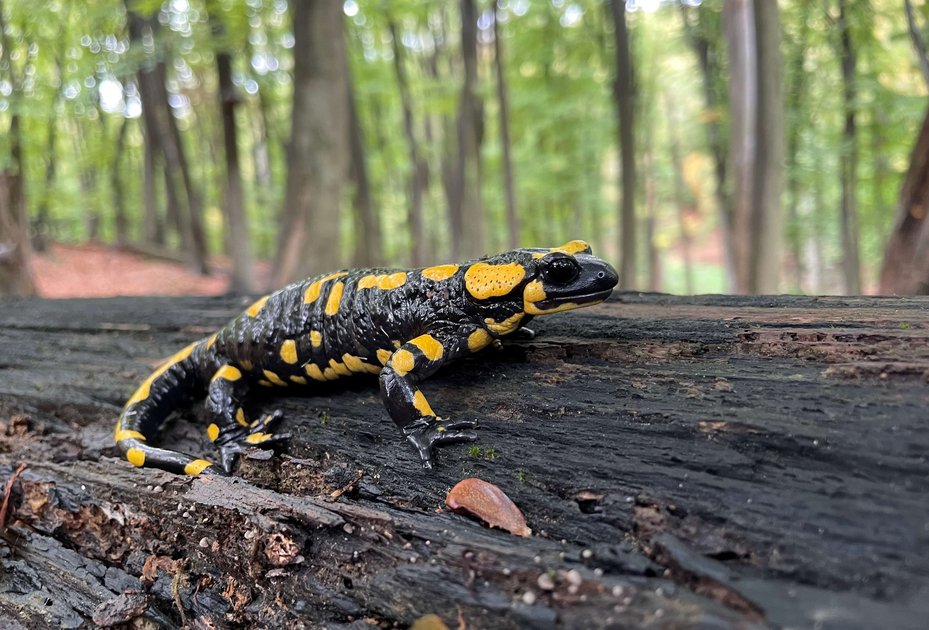- Home /
- University /
- Infoservice /
- Press Releases /
- Fire salamander: Habitat structure influences the risk of predation
Research
Fire salamander: Habitat structure influences the risk of predation
The fire salamander, which is native to Austria, defends itself against predators in two ways: through its conspicuous warning coloration and through a whitish, poisonous secretion that it can secrete from glands on its back. The warning coloration is conspicuous in different ways - which, according to a recently published study by the Konrad Lorenz Institute of Ethology (KLIVV) at the University of Veterinary Medicine, Vienna, only provides salamanders with limited protection from predators. What would provide effective additional protection, however, are non-managed forest areas.

Predator-prey interactions are a kind of evolutionary arms race - influenced by environmental factors. One common strategy to deter predators is aposematism. This involves the coupling of warning signals (e.g. visual) with secondary (e.g. chemical) defense mechanisms for deterrence.
The European fire salamander (Salamandra salamandra) is one such aposematic amphibian. “Their distinctive yellow-black warning coloration and skin toxins protect them from predators, with the yellow on their back correlating negatively with predation attempts. The more yellow they are, the better protected,” explains Carolin Dittrich, one of the lead authors of the study.
The risk of predation differs across forest zones
An important habitat of the fire salamander is the Vienna Woods Biosphere Reserve, a forest region in which both protected areas and areas with forest management can be found. In this natural habitat, the researchers compared the predation rates on fire salamanders. The plasticine salamander models used for this purpose had the same amount of yellow dorsal coloration, but differed in how this color was distributed, either over many small or few large markings, and were placed in either protected or managed forest zones. “We observed no differences based on the size of the markings, as all models were attacked similarly often. However, attacks by birds were more frequent in managed forest areas than in protected areas,” says Bibiana Rojas (KLIVV) about the results.
Complexity of forest structure and tree diversity make the difference
The main difference between these forest zones relates to tree diversity. “We suspect that forest structure and complexity may lead to differences in the abundance or composition of predator communities, which in turn could influence attack rates,” explains Rojas. The study authors therefore emphasize the importance of protected areas as potential refuges for fire salamanders and see a great need for further research, “especially to investigate the effects of differences in predator community composition on predation risk in different forest areas. Furthermore, our study highlights the intricate relationships between evolutionary strategies, ecological interactions and human land use. And it underlines the need for an integrated approach to forest management that considers the complex balance of natural ecosystems.”
The article „Habitat alteration impacts predation risk in an aposematic amphibian“ by Doriane Hagnier, Carolin Dittrich, Myrna Van den Bos and Bibiana Rojas was published in „Journal of Zoology“.
Scientific article
Scientific contact:
Ass.-Prof. Bibiana Rojas, PhD
Konrad-Lorenz-Institut für Vergleichende Verhaltensforschung (KLIVV)
Veterinärmedizinische Universität Wien (Vetmeduni)
Bibiana.Rojas@vetmeduni.ac.at